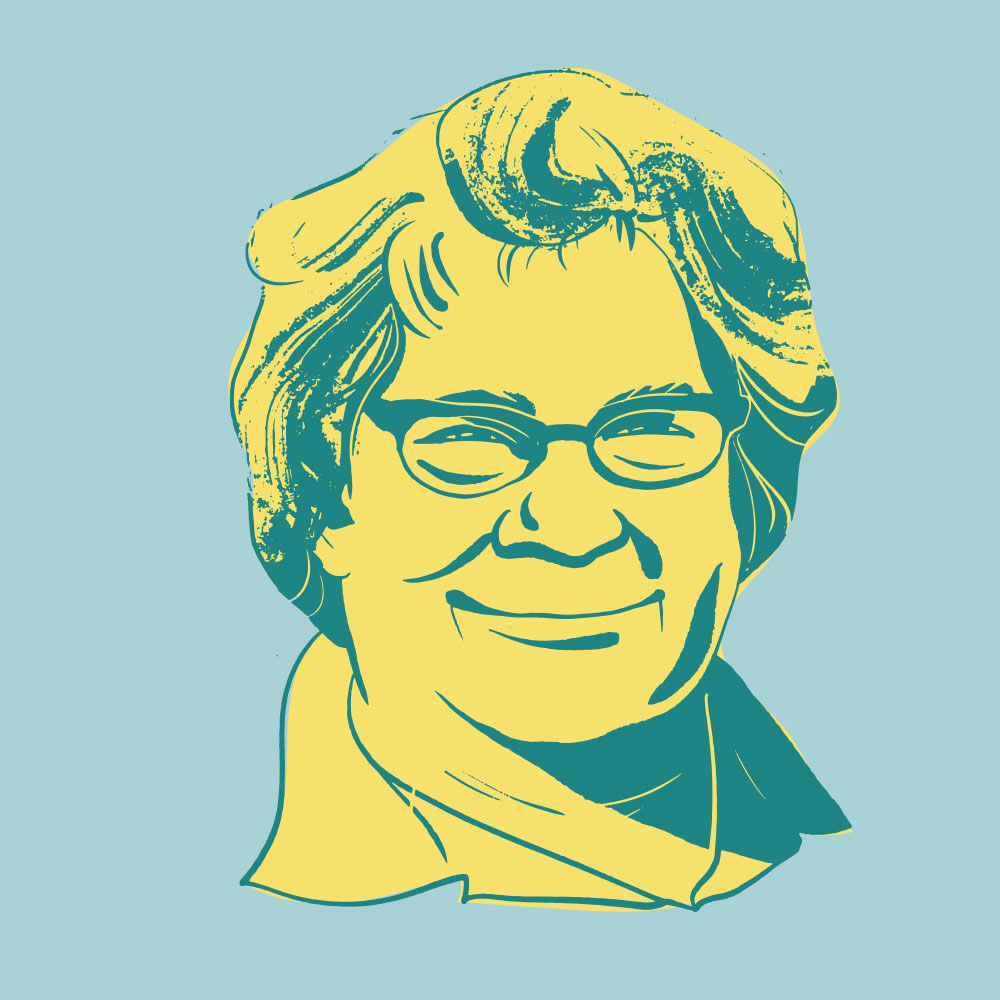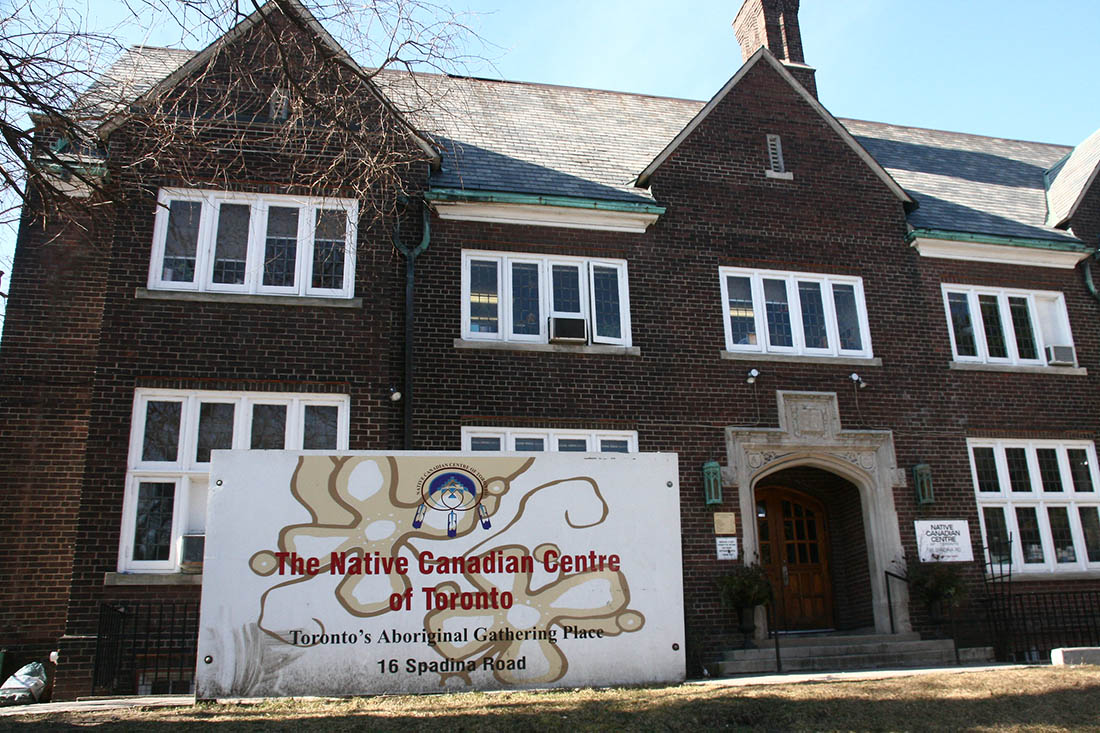Patronella “Verna” Johnston, community activist, author (born 15 February 1909 in Neyaashiinigmiing (formerly Cape Croker), ON; died 1996). Verna Johnston was an Ojibwe author and community activist. She operated a boarding house for Indigenous youth in Toronto. Later, she played a pivotal role in the establishment of the Native Canadian Centre of Toronto. Johnston compiled Ojibwe traditional stories she recalled from her youth and published them in the book Tales of Nokomis. Doing so helped preserve them for future generations. Her life was the subject of the biography I Am Nokomis, Too, written by University of Toronto anthropologist Rosamond M. Vanderburgh.
This article was created in collaboration with Museum of Toronto.

Early Life and Education
Patronella Verna Johnston (née Nadjiwon) was born in what was formerly known as the Cape Croker reserve. It is located on the Georgian Bay side of the Northern Bruce Peninsula. Her father was Peter Nadjiwon and her mother was Charlotte (Penn) Nadjiwon. Peter Nadjiwon was of Ojibwe ancestry and served as Chief of Cape Croker (now Chippewas of Nawash Unceded First Nation) for one term (see also First Nations in Ontario). Charlotte Nadjiwon was of English, Irish and Scottish ancestry. Johnston was the third child and third girl in a family of 14. She had nine brothers.
Johnston spent much of her early life with her paternal great-grandmother. Her great-grandmother gave her extra attention because she felt the boys of her family would get more attention than her. Johnston said of her great-grandmother that she “was the most important person in my life as I grew up.” Later in life, Johnston recalled her mother instilling a strong work ethic in her. She helped raise her younger siblings. As a child, it was her job to make the beds and to sweep the hardwood floors of their home. Trying to cut down on her workload, she tried to fool her mother by only sweeping where it showed most. Her mother told her that “the dirtiest dirt isn't always the dirt that shows.” The comment stuck with her her whole life. She said her work ethic, which she described as being a “workaholic,” may have made it difficult for people to live and work with her.
Verna Johnston married Henry Johnston when she was 17. They soon had five children, including four in as many years. She wasn’t happy in the relationship, as her husband was an alcoholic. In 1945, after 19 years of marriage, Johnston left to find work in Toronto. Missing her community, she returned to Neyaashiinigmiing.
Career
In the 1960s, two of Verna Johnston’s granddaughters wanted to study in Toronto. Johnston was concerned about anti-Indigenous racism and violence. She also remembered her own estrangement from her home community when she had lived and worked in Toronto years earlier. Racism against Indigenous people at the time was described as overt, systemic and widespread. She was opposed to the idea of her granddaughters going to Toronto without her. Rather than stand in the way of her granddaughters’ education, she packed her bags and went to Toronto with them. She wanted to make sure her granddaughters could thrive in the big city. As a result, she cooked for them, maintained a safe and comfortable home and talked with them every night. Doing so ultimately placed Johnston on the forefront of social, cultural and community services to Indigenous peoples in the city. Her volunteer work quickly established her reputation. She in turn founded organizations that continue to support Indigenous communities to this day.

She and her granddaughters first moved into an apartment on Danforth Avenue. Soon thereafter, word spread that Johnston’s home was a safe space for Indigenous youth who came to the city. She soon began offering sanctuary and support to Indigenous youth fleeing oppression, abuse and violence. Quickly outgrowing her rented apartment, a friend soon let her move into a house on Blythwood Road that could accommodate more Indigenous youth, up to 10 boarders at a time. This came to be known as “Grandma Johnston’s House”. By 1996, Johnston had helped hundreds of Indigenous youth find their footing in Toronto and establish themselves in safety and security. She lectured on Indigenous cultures and frequently gave talks to local businesses and community groups. She also volunteered at several Toronto-based Indigenous community groups during their formative years. Johnston volunteered with the Anduhyaun House, Wigwamen Housing, the YMCA and the Red Cross in Toronto. Additionally, Johnston appeared in an educational video, called Nibo’ Apinewin, about HIV/AIDS (see AIDS). The youth she helped would go on to become community organizers, teachers and social workers, among others. Additionally, they would continue supporting Indigenous youth in Toronto, as well as in Indigenous communities throughout Ontario.
In addition to her community social work, Johnston published a book of Ojibwe traditional stories titled Tales of Nokomis. These Ojibwe traditional stories had been told to her when she was a young child by an Elder. The Elder was reportedly a 103-year-old woman to whom the children of the village brought kindling, water and apples. Johnston thought that unless she wrote down what she could remember of these traditional stories, they may be lost forever. Tales of Nokomis was published in 1970 and was well received by critics. Nokomis is an Anishinaabemowin word for grandmother. Later in her life, anthropologist Rosamond M. Vanderburgh wrote a biography about Johnston that was titled I Am Nokomis, Too.
In 1976, Johnston was named Indian Woman of the Year for her volunteer work by the Native Women’s Association of Canada.

 Share on Facebook
Share on Facebook Share on X
Share on X Share by Email
Share by Email Share on Google Classroom
Share on Google Classroom



